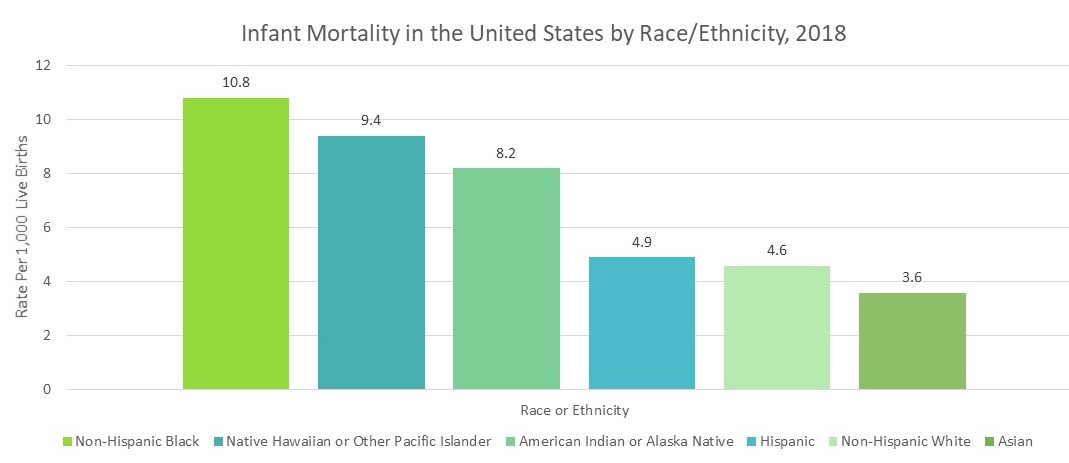Community Data
Infant Mortality
Quick Facts:
- Infant mortality is the death of an infant that occurs before his or her first birthday.
- The infant mortality rate in the United States was 5.6 deaths per 1,000 live births in 2019.
- In 2018, the infant mortality rate for non-Hispanic Black infants was more than two times as high as the infant mortality rate for non-Hispanic white infants.

Leading Causes of Infant Mortality in the United States
- Congenital malformations
- Low birth weight
- Sudden infant death syndrome
- Unintentional injuries
- Maternal complications
- Cord and placental complications
- Bacterial Sepsis of newborn
- Respiratory Distress of newborn
- Diseases of the circulatory system
- Neonatal hemorrhage
Community Data
Low Birthweight
Quick Facts:
- In the United States, about 8% of babies are born with a low birthweight.
- In 2019, about 8.4% of Texas babies born in 2019 were born with a low birthweight.
- 9.3% of babies born in Taylor County in 2019 were born with a low or very low birthweight.
What is Low Birthweight and Why is it Important?
Infants born weighing less than 5 pounds 8 ounces are considered to have a low birth weight. In the United States, this affects about 1 out of every 13 babies. The percentages of infants who had a low birthweight were highest in non-Hispanic black and Hispanic newborns in 2014. Infants who have a low birthweight may have a higher risk of infection and poor development, including delayed motor skills, delayed social development, and learning disabilities. Factors that may have an impact on a baby’s birthweight include your income level, education level, smoking during pregnancy, drinking alcohol during pregnancy, and taking certain medications while pregnant. You should always ask your doctor before taking any medications, including over-the-counter medications and supplements, when you are pregnant.


Low Birthweight in Our Community:
Darker colors on the interactive maps indicate worse outcomes.
In 2009, about 8.5% of infants born in Taylor County were born with a low birthweight. This rate increased very slightly by 2010 to 9%, but then remained steady over the next decade. As of 2019, about 8.8% of newborns born in Taylor County weighed less than 5 pounds 8 ounces at the time of birth.

Click for Data Sources
Centers for Disease Control and Prevention. (2021, September 8). Infant Mortality. Centers for Disease Control and Prevention. Retrieved on March 29, 2022 from https://www.cdc.gov/reproductivehealth/maternalinfanthealth/infantmortality.htm
Murphy SL, Kochanek KD, Xu J, Arias E. Mortality in the United States, 2020. NCHS Data Brief, no 427. Hyattsville, MD: National Center for Health Statistics. 2021. DOI: https://dx.doi.org/10.15620/cdc:112079
National Center for Health Statistics. (2022, May 16). Birthweight and Gestation. Centers for Disease Control and Prevention. Accessed June 24, 2022 from https://www.cdc.gov/nchs/fastats/birthweight.htm
Texas Department of State Health Services. (n.d.). Live Births in Texas, 2005 – 2019. Texas.gov. Accessed June 24, 2022 from https://healthdata.dshs.texas.gov/dashboard/births-and-deaths/live-births
National Environmental Public Health Tracking. (2022, May 31). Indicator: Low Birthweight. Centers for Disease Control and Prevention. Accessed June 24, 2022 from https://ephtracking.cdc.gov/indicatorPages?selectedContentAreaAbbreviation=8&selectedIndicatorId=14&selectedMeasureId=
National Cancer Institute. (n.d.). Low Birth Weight. National Institutes of Health. Accessed June 24, 2022 from https://www.cancer.gov/publications/dictionaries/cancer-terms/def/low-birth-weight
County Health Rankings. Texas Data Downloads: 2011 to 2021. Robert Wood Johnson Foundation. Accessed February 17, 2022 from https://www.countyhealthrankings.org/app/texas/2022/downloads


